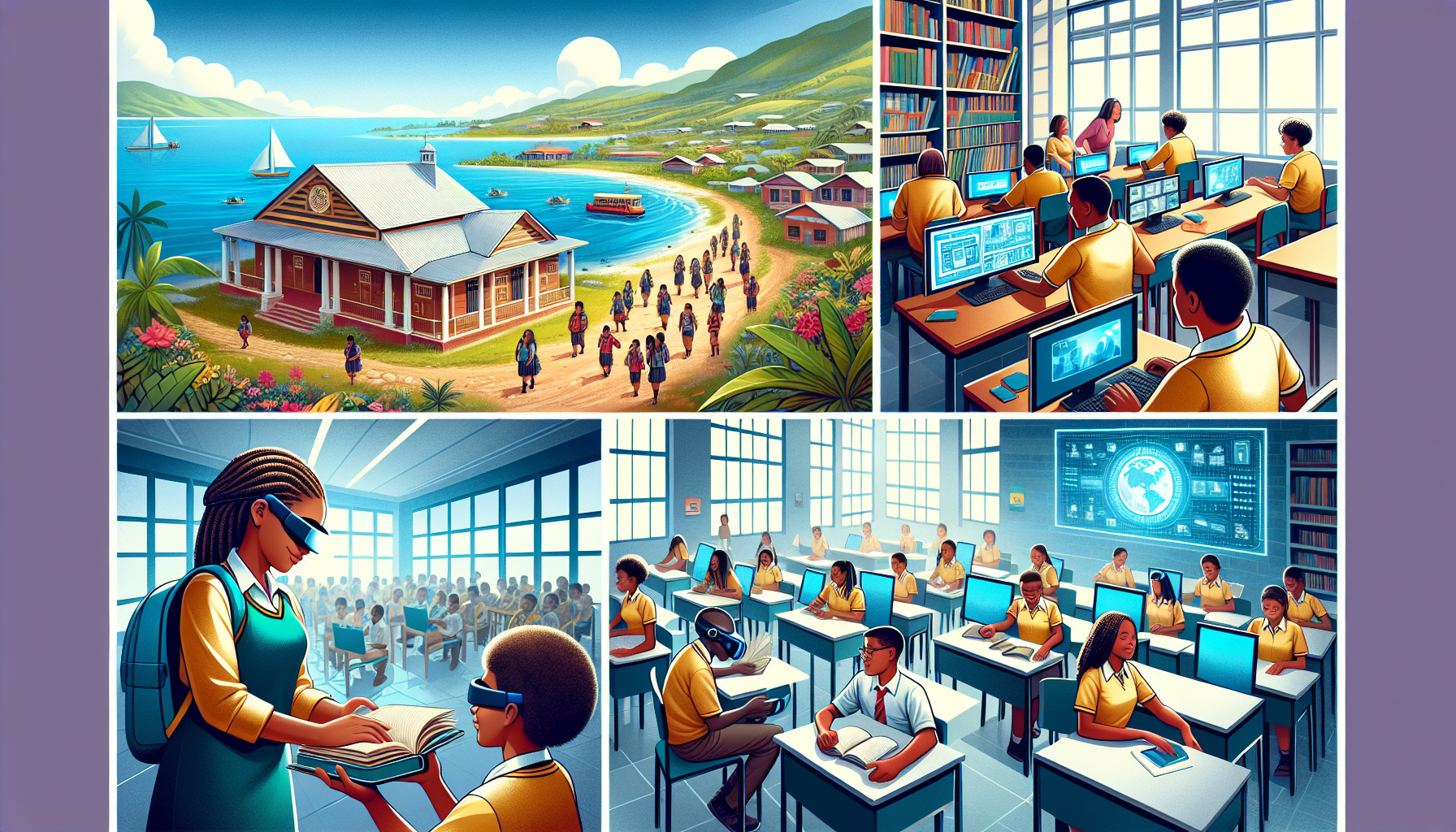As the world becomes increasingly digital, access to technology has become fundamental for education. In Jamaica, however, the gap between those who have access to digital tools and those who don’t—the “digital divide”—remains a significant challenge, especially for schools and students in rural or low-income areas. This divide impacts students’ ability to engage fully with learning materials, places extra burdens on educators, and limits the nation’s educational potential. But with targeted efforts and innovative solutions, Jamaica can bridge this gap, offering a more equitable and accessible educational experience for all.
The Impact of the Digital Divide on Jamaican Education
The digital divide affects schools in various ways:
- Limited Access to Learning Resources: Many schools in rural areas lack access to computers, high-speed internet, and modern educational software. This shortage restricts teachers’ ability to use digital resources like e-books, online labs, and interactive teaching tools, making it harder for students to engage with up-to-date and diverse learning materials.
- Disparities in Student Achievement: Without access to digital resources, students in underserved communities often lag behind their peers in urban areas who have more opportunities to practice digital literacy skills. These skills—such as research, critical thinking, and online collaboration—are crucial for academic and professional success, putting students from lower-income schools at a disadvantage.
- Reduced Teacher Efficiency and Support: Many Jamaican educators would benefit from digital tools that can streamline lesson planning, grading, and communication. Limited access to these tools not only makes teachers’ jobs harder but also deprives students of engaging, well-rounded lessons.
Causes of the Digital Divide in Jamaica
The digital divide in Jamaica has multiple roots:
- Economic Barriers: Many schools, particularly those in low-income areas, lack the funding to purchase digital devices, maintain an internet connection, or invest in educational software. Government support for technology varies across the island, and rural areas often receive less assistance due to logistical and funding constraints.
- Infrastructure Limitations: Even when funding is available, poor infrastructure in rural areas complicates tech adoption. Limited internet coverage, unreliable electricity, and high installation costs make it difficult for some schools to establish and maintain digital connections.
- Lack of Digital Literacy: Both students and teachers need training to effectively use digital tools. Without adequate resources for professional development, teachers may struggle to integrate technology into their classrooms, and students may miss out on valuable digital skills.

Bridging the Digital Divide: Potential Solutions
To address these challenges, we need a multi-pronged approach that combines public and private efforts. Here are some strategies to bridge the digital divide in Jamaican education:
- Partnerships with Tech Companies and NGOsPublic-private partnerships can play a crucial role in closing the digital gap. By collaborating with tech companies, NGOs, and international organizations, schools can gain access to donated devices, affordable internet plans, and training programs. For instance, tech companies might offer refurbished computers or free educational software, while local businesses could help subsidize internet access in schools. Partnerships like these could provide immediate, practical relief to underserved communities.
- Implementing Community-Based Digital Learning HubsIn areas where infrastructure is limited, creating community digital learning hubs could provide a valuable alternative to in-school digital resources. These hubs, equipped with computers, internet access, and educational software, could serve as after-school learning centers where students and teachers have access to digital resources. A hub approach can help maximize the reach of limited resources, particularly in rural areas, and offer a community-centered solution to digital access.
- Government-Led Digital Literacy Programs and Funding InitiativesThe Jamaican government can make a significant impact by creating funding programs dedicated to equipping schools with technology and offering training programs for educators. Digital literacy programs should be embedded in the curriculum, teaching students essential computer skills alongside traditional subjects. Government support in the form of grants or subsidies for technology adoption would also be invaluable in making digital learning more accessible across the island.
Why Closing the Digital Divide Matters for Jamaica’s Future
Bridging the digital divide isn’t just about technology—it’s about equity, opportunity, and national growth. Closing this gap would mean more students have the chance to pursue their full academic potential, regardless of socioeconomic background. When students develop strong digital skills, they’re better prepared for a competitive workforce, which can, in turn, strengthen Jamaica’s economy.
Moreover, narrowing the digital divide aligns with global goals for sustainable development, promoting inclusive education and lifelong learning opportunities for all. By investing in technology and focusing on digital inclusion, Jamaica can position itself as a forward-thinking leader in the Caribbean, fostering an educated, empowered population.
A Call to Action for Collaborative Solutions
Addressing the digital divide in Jamaican education requires a united effort. Government bodies, tech companies, educators, and communities each have roles to play in creating a more equitable education system. By pooling resources and expertise, Jamaica can ensure that all students have the tools they need to succeed in a digital world. Let’s work together to make digital equity a reality in Jamaican education and create a future where every student has the same opportunities to learn, grow, and thrive.



